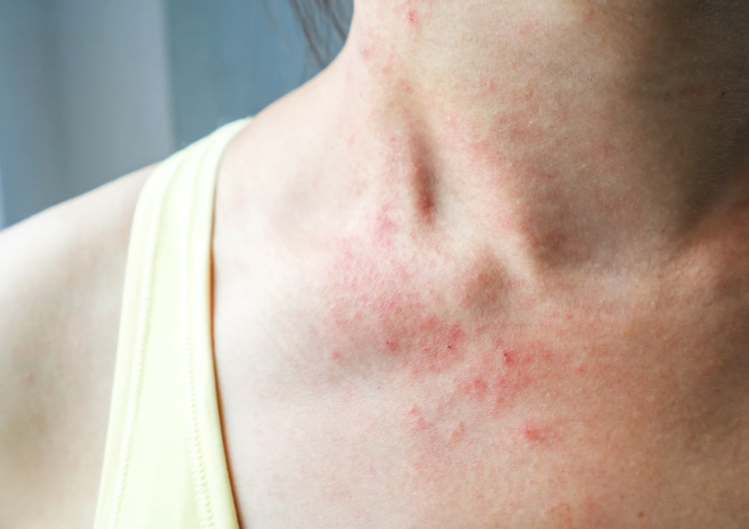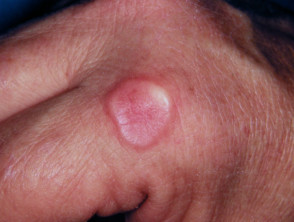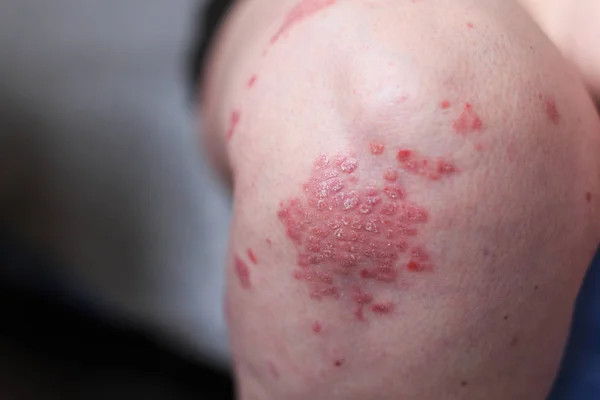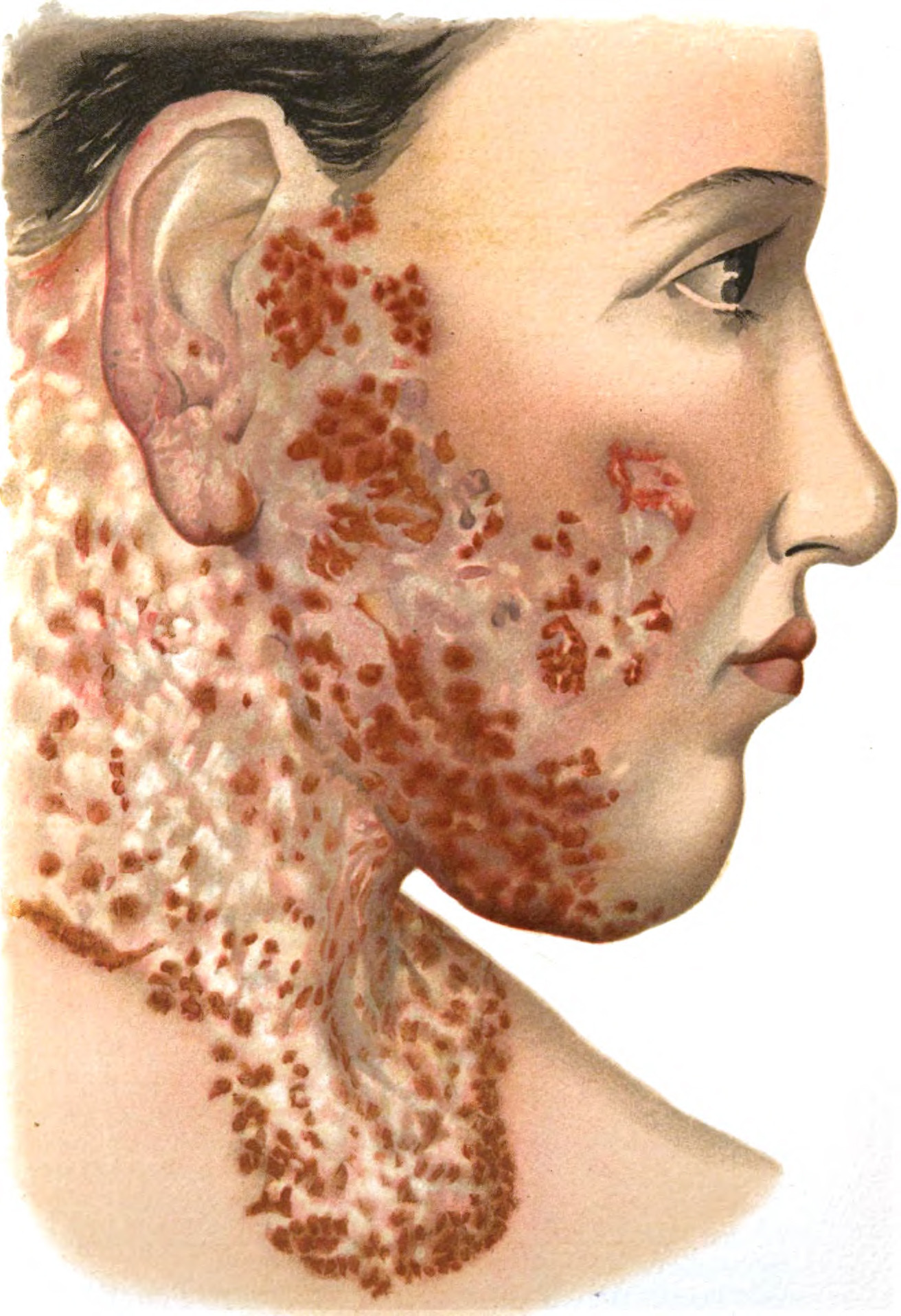Definisi
Dermatitis kontak alergi terjadi ketika tubuh terpapar senyawa yang menimbulkan reaksi alergi. Ketika hal ini terjadi, sistem kekebalan tubuh pada kulit akan bereaksi untuk melawan senyawa yang dianggap berbahaya bagi tubuh tersebut, walaupun sebenarnya tidak berbahaya. Dermatitis adalah istilah untuk menggambarkan kondisi peradangan pada kulit, sehingga dermatitis kontak bisa diartikan sebagai peradangan kulit yang disebabkan oleh berkontaknya kulit dengan bahan tertentu. Zat yang dianggap memicu reaksi alergi bisa berbeda-beda pada setiap individu. Sebagian besar kasus dermatitis kontak alergi disebabkan oleh perhiasan atau logam lain yang terdapat pada benda yang digunakan sehari-hari.
Dermatitis kontak alergi merupakan salah satu tipe dermatitis kontak, bersama dengan dermatitis kontak iritan. Dermatitis kontak iritan adalah peradangan kulit yang disebabkan oleh zat-zat kimia yang menyebabkan peradangan atau iritasi kulit, seperti pestisida, sabun cuci piring, semen, detergen, dan lain-lain. Dermatitis kontak iritan terjadi pada semua orang yang terpapar dengan zat tersebut.
Pada dermatitis kontak alergi, tidak semua orang mengalami reaksi peradangan kulit setelah terpapar zat yang sama. Paparan terhadap zat yang memicu reaksi alergi tersebut akan mencetuskan reaksi kekebalan tubuh yang berlebihan serta peningkatan sel darah putih, pada lokasi kontak zat dengan kulit.
Penyebab
Dermatitis kontak alergi terjadi setelah paparan berulang kulit dengan senyawa pemicu alergi. Pada paparan pertama dengan zat tertentu, kulit akan tersensitisasi dan sistem kekebalan tubuh akan menganggap bahan tersebut sebagai senyawa pemicu alergi. Pada paparan kedua dengan bahan yang sama, sistem imun yang berlebihan akan tercetus dan terjadi peradangan. Gejala dari peradangan muncul dalam 4-24 jam setelah paparan. Kulit dapat tersensitisasi pada paparan pertama atau setelah beberapa kali paparan, dan hal ini bervariasi pada setiap individu.
Zat yang sering menyebabkan dermatitis kontak alergi antara lain:
- Nikel, umumnya terdapat pada perhiasan
- Logam lain seperti kobalt, kromium, merkuri, emas
- Obat-obatan, seperti krim antibiotik, antiseptik, anti nyeri golongan non-steroid, dan tabir surya
- Balsam
- Formaldehid yang digunakan sebagai bahan pengawet dan disinfektan
- Produk perawatan diri, seperti deodoran, sabun, pewarna rambut, kosmetik, dan cat kuku
- Tanaman, seperti poison ivy dan mangga yang mengandung zat alergen seperti urishiol
- Serbuk sari
- Insektisida
- Produk yang menyebabkan reaksi pada kulit ketika Anda terpapar cahaya matahari (photoallergic contact dermatitis), seperti tabir surya atau obat minum lainnya
- Pewangi pada sabun, detergen, dan lain-lain
- Bahan karet, seperti sarung tangan lateks, kondom, kateter, dan balon
Anak dapat mengalami dermatitis kontak alergi setelah menggunakan popok, tisu basah, tabir surya, atau pakaian dengan pewarna tertentu.
Faktor Risiko
Beberapa pekerjaan dan hobi tertentu dapat meningkatkan risiko Anda mengalami dermatitis kontak alergi, antara lain:
- Tenaga kesehatan
- Pekerja bangunan dan konstruksi
- Penata rambut dan perias wajah
- Mekanik
- Penyelam, karena terpapar dengan karet pada goggle
- Koki atau orang yang bekerja dengan makanan
Gejala
Gejala dari dermatitis kontak alergi, antara lain:
- Gatal adalah gejala utama pada dermatitis kontak alergi, terasa lebih berat dibandingkan nyeri
- Ruam kemerahan pada kulit
- Kulit kering dan berkerak
- Terdapat bagian kulit yang melepuh
- Rasa terbakar
- Pembengkakan pada daerah kulit yang ruam
- Riwayat kontak pada kulit dengan bahan-bahan yang sering menimbulkan alergi
Gejala dermatitis kontak alergi pada kulit tidak langsung muncul setelah paparan, melainkan sekitar 4-48 jam setelah paparan. Waktu munculnya gejala ini bervariasi dari setiap orang, namun tidak langsung muncul seperti pada dermatitis kontak iritan.
Diagnosis
Dokter akan mendiagnosis dermatitis kontak alergi berdasarkan gejala dan temuan pada kulit. Dokter perlu menanyakan beberapa hal seperti pekerjaan, hobi, pekerjaan rumah, riwayat berpergian, bahan pakaian yang digunakan, kosmetik, dan aktivitas yang biasa dilakukan. Pada beberapa kasus, lokasi dan bentuk peradangan pada kulit cukup khas sehingga dokter dapat menentukan diagnosis dengan lebih pasti, contohnya pada kasus dermatitis kontak alergi yang disebabkan oleh kalung, akan terjadi peradangan di sekitar leher.
Jika diagnosis belum dapat ditegakkan dengan pasti, dokter Anda akan melakukan pemeriksaan patch test untuk melihat zat mana yang tubuh Anda anggap sebagai senyawa pemicu reaksi alergi. Pemeriksaan ini dilakukan dengan menempelkan beberapa zat yang sering menjadi pemicu alergi ke kulit Anda dalam jumlah kecil selama 2-3 hari. Setelah itu, dokter Anda akan meminta Anda kembali datang untuk melihat reaksi kulit Anda terhadap zat-zat tersebut.
Tata Laksana
Dokter Anda akan memberikan pengobatan sesuai derajat keparahan dermatitis. Pada kondisi yang ringan, obat-obatan tertentu tidak perlu diberikan.
Perawatan biasa pada kulit dapat membantu penyembuhan, seperti menggunakan pelembab dan mencuci bagian kulit yang mengalami keluhan dan terpapar bahan pemicu alergi. Pelembab dapat membantu menjaga kelembapan kulit Anda. Kulit yang lembap lebih mudah beregenerasi, sehingga luka dapat cepat sembuh. Kulit yang lembap juga relatif lebih terlindungi paparan senyawa pemicu alergi dan tidak mudah mengalami radang.
Jika gatal dan gejala pada kulit berlanjut, dokter Anda dapat meresepkan beberapa hal di bawah ini seperti:
- Krim steroid untuk meredakan gejala dermatitis pada kulit. Krim dapat diaplikasikan 1 hingga 2 kali dalam sehari selama 2 minggu, tergantung pada arahan dokter. Jangan gunakan atau membeli krim ini tanpa resep dokter.
- Obat minum seperti:
- Kortikosteroid untuk meredakan peradangan
- Antihistamin untuk meredakan gatal
- Antibiotik bila terdapat infeksi bakteri pada kulit
Ruam dan peradangan pada kulit akibat dermatitis kontak alergi akan hilang dalam waktu 2-4 minggu.
Perawatan Diri di Rumah
- Sebisa mungkin kenali dan hindari zat atau senyawa yang memicu reaksi alergi pada tubuh
- Gunakan krim anti gatal di bagian kulit yang terpapar dengan zat pemicu alergi
- Gunakan kompres dingin pada bagian kulit yang mengalami kemerahan atau ruam
- Jangan menggaruk bagian kulit yang kemerahan
- Lindungi tangan Anda dengan mencuci tangan, menggunakan pelembab, dan pilih sarung tangan yang tidak menyebabkan reaksi alergi
- Jika kulit berkontak dengan zat pemicu alergi, segera cuci permukaan kulit yang berkontak dengan sabun dan keringkan
Komplikasi
Komplikasi dari dermatitis kontak alergi antara lain:
- Rasa gatal yang mengganggu aktivitas sehari-hari
- Perubahan warna pada kulit yang sering terpapar menjadi lebih gelap
- Infeksi kulit
Pencegahan
Pencegahan yang dapat Anda lakukan agar tidak terjadi dermatitis kontak alergi, antara lain:
- Hindari iritan dan zat alergen. Anda dapat melakukan pemeriksaan untuk mencari tahu zat mana yang merupakan pemicu alergi bagi Anda
- Cuci kulit anda jika terpapar bahan iritan dengan menggunakan sabun dan air hangat
- Gunakan alat pelindung diri jika Anda harus terpapar dengan bahan pemicu alergi tertentu
Kapan Harus ke Dokter?
Periksakan diri Anda ke dokter jika Anda mengalami:
- Ruam pada kulit yang gatal hingga mengganggu tidur atau pekerjaan
- Mengalami ruam tiba-tiba yang nyeri dan menyebar
- Ruam kulit yang Anda alami tidak membaik dalam 3 minggu
Segera cari pertolongan jika Anda mengalami:
- Infeksi pada kulit, ditandai oleh nanah dan demam
- Paru-paru, mata, dan saluran napas Anda terasa nyeri akibat menghirup alergen
- Terjadi pembengkakan pada bibir dan mulut setelah terpapar zat tertentu
Mau tahu informasi seputar penyakit lainnya? Cek di sini, ya!
- dr Hanifa Rahma
Cleveland Clinic. (2019). Irritant & allergic contact dermatitis. Available from: https://my.clevelandclinic.org/health/diseases/6173-contact-dermatitis
Hoss, E. (2021). Contact dermatitis. MedlinePlus. Available from: https://medlineplus.gov/ency/article/000869.htm
Ruenger, TM. (2021). Contact dermatitis. MSD Manual Consumer Version. Available from: https://www.msdmanuals.com/home/skin-disorders/itching-and-dermatitis/contact-dermatitis
Murphy, PB., Atwater, AR., Mueller, M. Allergic Contact Dermatitis. [Updated 2021 Sep 20]. In: StatPearls [Internet]. Treasure Island (FL): StatPearls Publishing; 2022 Jan-. Available from: https://www.ncbi.nlm.nih.gov/books/NBK532866/
Weston WL. (2022). Patient education: contact dermatitis. UpToDate. Available from: https://www.uptodate.com/contents/contact-dermatitis-including-latex-dermatitis-beyond-the-basics












